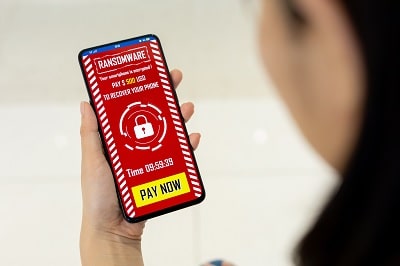What is Cyber Hygiene?
Cyber hygiene refers to the practices and measures individuals and organizations take to maintain good digital health and security. Just like personal hygiene routines keep us healthy, cyber hygiene involves habits and precautions that help protect digital systems and data from cyber threats.
Cyber Hygiene includes activities like regularly updating software, using strong and unique passwords, employing antivirus software, being cautious with email attachments and links, and backing up data regularly. Essentially, it’s about adopting proactive behaviors to minimize the risk of cyberattacks and ensure digital safety.
What are the Cybersecurity Trends in 2024?
According to Forbes Magazine, By the end of 2024, it’s projected that cyber-attacks will surpass $10.5 trillion in costs to the global economy.
There are several factors attributed to the growing number of cyber-attacks including:
- Technological Advances
- The Lack of Skilled Cybersecurity Professionals
- Elevated Sophistication in Phishing Attacks
- The Advancement of AI
- An Increase in Devices Talking to Each Other
Cyber Resilience
Another 2024 trend will involve risk mitigation if a company does get cyber-compromised. It’s called Cyber Resilience and there will be an increase in efforts toward improving the outcomes of cyber attacks.
What is Cyber Resilience?
Cyber resilience goes beyond just defense mechanisms. It involves the ability of an organization to withstand, adapt to, and recover from cyber-attacks or incidents. Cyber resilience acknowledges that despite strong cybersecurity measures, breaches or incidents may occur. Therefore, it emphasizes preparedness, response, and recovery strategies to minimize the impact of cyber events on operations, data, and reputation.
In essence, cybersecurity focuses on preventing and protecting against cyber threats, while cyber resilience encompasses a broader approach, emphasizing the organization’s ability to continue operating effectively despite an attack and to recover swiftly and efficiently after an incident. Cyber resilience incorporates not only defensive measures but also proactive strategies for continuity, adaptation, and recovery in the face of cyber disruptions.

With Great Responsibility Comes Great Power
Cybersecurity is Everyone’s Responsibility
Both cybersecurity and cyber resilience aren’t just issues for tech experts or specialized agencies anymore. It’s everyone’s responsibility. With the exponential growth of digital interactions, the obligation to safeguard against cyber threats and know what to do when you or your organization experiences a breach extends across all levels of society.
Whether it’s individuals, organizations, or government agencies, we all must accept responsibility for protection against cyber attacks and for knowing what to do if we experience a breach.
Individuals
For individuals, practicing good cyber hygiene is imperative. Each person must understand their role in protecting personal data and preventing unauthorized access.
Companies
Companies, regardless of size, must safeguard their customers’ and employees’ information. This responsibility incorporates implementing robust security measures, conducting regular risk assessments, educating employees about cyber threats, and establishing incident response plans. It’s not just about protecting proprietary information but also about maintaining the trust of stakeholders.
Government Agencies and Their Suppliers
Government agencies and their suppliers hold vast amounts of sensitive data, making them prime targets for cyberattacks. They must invest in cutting-edge cybersecurity measures, regularly audit their systems, enforce stringent policies, and collaborate with other entities to share threat intelligence. Governments also play a vital role in setting regulations and standards that incentivize robust cybersecurity practices across industries.
This article covers basic cyber hygiene best practices that are considered foundational for protection against cyber attacks.
Cyber Hygiene Best Practices for Every User
Strong Passwords
Strong passwords are a fundamental aspect of good cyber hygiene as they form the frontline defense against unauthorized access to your accounts and sensitive information.
How Do Strong Passwords Help Protect in a Cyber Attack?
Protection Against Unauthorized Access
A strong password acts as a barrier preventing unauthorized individuals from accessing your accounts. It makes it significantly harder for hackers to guess or crack the password through brute force attacks or automated programs.
Preventing Credential Stuffing Attacks
Strong, unique passwords for each account minimize the risk of falling victim to credential-stuffing attacks. These attacks occur when hackers use combinations of usernames and passwords leaked from one source to gain unauthorized access to other accounts where users have reused the same credentials.
Increasing Security Layers
Multi-factor authentication (MFA) is often reinforced by a strong password. MFA combines something you know (like a password) with something you have (like a code sent to your phone) to provide an additional layer of security. A strong password complements this secondary authentication method, making it more challenging for attackers to breach your accounts.
Reducing Vulnerability to Dictionary Attacks
Strong passwords are usually complex, comprising a mix of upper and lowercase letters, numbers, and special characters. This complexity makes them resistant to dictionary attacks, where attackers try common words or phrases in an attempt to guess passwords.
Longevity of Account Security
Regularly changing passwords and employing strong, unique ones for each account reduces the risk of long-term compromise. If a breach occurs on one platform and your password is exposed, using different passwords for other accounts ensures their continued security.
Protecting Personal and Sensitive Data
Strong passwords are crucial for safeguarding personal information, financial data, and other sensitive details stored within online accounts. They act as the first line of defense against identity theft and financial fraud.
Encouraging and practicing the use of strong passwords, coupled with good password management practices (such as using a reputable password manager to generate and store complex passwords), significantly enhances cyber hygiene and fortifies individual and organizational security against cyber threats.
Strong Multifactor Authentication
With cyber-attacks becoming both more frequent and more sophisticated, strong passwords are not enough. We need more levels of security. That’s where multifactor authentication comes into play.
What is Multifactor Authentication?
Multi-factor authentication (MFA) is a powerful security measure that adds an extra layer of protection beyond just a username and password. It requires users to provide two or more different factors to authenticate their identity, typically something they know (like a password), something they have (like a mobile device or a security key), or something they are (like biometric data).

How Does MFA Help Protect Against Cyber Attacks?
Enhanced Security
MFA significantly strengthens security by requiring multiple forms of verification. Even if a hacker manages to obtain a user’s password, they will still need the additional factor to gain access, making unauthorized access much more difficult.
Mitigation of Credential Theft
In cases of phishing attacks or data breaches where passwords are stolen, MFA acts as a safety net. Even if the password is compromised, the hacker would still need the second factor to authenticate successfully.
Reduction of Unauthorized Access
MFA helps prevent unauthorized access to sensitive systems or accounts, especially in scenarios where passwords might be weak, reused across multiple accounts, or easily guessable.
Protection Against Brute Force Attacks
MFA safeguards against brute force attacks, where attackers attempt various password combinations to gain access. Even if the password is guessed correctly, the second authentication factor acts as a barrier.
Adaptability and Flexibility
MFA methods can vary, providing flexibility in choosing the most suitable factors for different environments. These can include SMS codes, mobile authentication apps, biometric verification (like fingerprints or facial recognition), hardware tokens, or smart cards.
Compliance with Security Standards
Many regulatory standards and frameworks, such as GDPR, PCI DSS, and HIPAA, recommend or require the implementation of MFA to strengthen security measures and protect sensitive data.
User Awareness and Accountability
MFA encourages users to be more aware of security practices and adds an additional level of accountability for their online activities.
MFA Is Not Foolproof
It’s important to note that while MFA significantly increases security, it is not foolproof. Some MFA methods, such as SMS-based authentication, have known vulnerabilities. Therefore, using more secure methods like authentication apps or hardware tokens is advisable for critical accounts.
Overall, MFA is an instrumental tool in the cybersecurity arsenal, significantly reducing the risk of unauthorized access and enhancing overall protection against various cyber threats.

Software Updates
Software updates, also known as patches or software fixes, play a vital role in preventing cyber attacks by addressing vulnerabilities and weaknesses present in software.
How do Software Updates Protect Against a Cyber Attack?
Patch Known Vulnerabilities
Updates often include patches to fix known vulnerabilities. Cyber attackers exploit these vulnerabilities to gain unauthorized access, execute malicious code, or steal data. Regular updates ensure these weaknesses are fixed, making it harder for attackers to exploit them.
Security Enhancements
Software updates often include security enhancements or new features designed to bolster the overall security of the application or system. These enhancements may include stronger encryption, improved access controls, or additional layers of defense against emerging threats.
Protection Against Exploits
Hackers often use exploits—malicious code or techniques—to take advantage of vulnerabilities in outdated software. Regular updates close these avenues of exploitation, making it more challenging for attackers to leverage known exploits.
Maintaining System Integrity
Software updates help in maintaining the integrity of the entire system. They not only fix security vulnerabilities but also address bugs, stability issues, and performance improvements. A well-maintained system is less likely to be compromised.
Compliance with Security Standards
Many regulatory standards and frameworks require software to be regularly updated to protect against known vulnerabilities. Adhering to these standards through regular updates ensures compliance and reduces the risk of penalties or breaches.
Preventing Zero-Day Attacks
Zero-day vulnerabilities are unknown to the software vendor and therefore have no available patches. However, once a vulnerability is discovered, vendors often release updates rapidly to address it. Regularly updating software ensures that known zero-day vulnerabilities are patched as soon as fixes become available.
Staying Ahead of Threats
Cyber threats evolve continuously. Regular software updates ensure that your system is equipped with the latest defenses against emerging threats and attack techniques.
Vendor Support and End-of-Life Issues
Software vendors eventually stop supporting older versions of their software, which means they no longer provide security updates or patches. Running outdated software increases vulnerability to attacks. Updating to supported versions ensures ongoing vendor support and security patches.
Regularly updating software, including operating systems, applications, antivirus programs, and firmware, is a critical aspect of cyber hygiene.

It helps maintain a strong defense against cyber attacks by minimizing the attack surface and ensuring that known vulnerabilities are addressed promptly.
Safe Browsing Habits
Safe browsing habits are essential in protecting against various cyber attacks as they significantly reduce the risk of encountering malicious websites, phishing attempts, and other online threats.
How do Safe Browsing Habits Protect Against Cyber Attacks?
Preventing Phishing Attacks
Safe browsing habits involve being cautious of suspicious links in emails, social media, or websites. Users who practice safe browsing are less likely to click on phishing links, which often lead to fake websites designed to steal login credentials or personal information.
Avoiding Malware and Viruses
Safe browsing practices include being mindful of downloading files or software from untrusted sources. Users who refrain from visiting suspicious websites or clicking on suspicious ads are less likely to inadvertently download malware or viruses onto their devices.
Protecting Against Drive-by Downloads
Some websites can automatically download malware onto a user’s device without their knowledge through drive-by downloads. Safe browsing habits, such as avoiding suspicious websites and pop-ups, reduce the risk of encountering such malicious downloads.
Secure Online Transactions
Safe browsing includes verifying the security of websites before entering sensitive information. Users who check for HTTPS encryption and look for trust indicators (like padlock icons) in their browsers ensure a secure connection when making online purchases or entering personal details.
Avoiding Scams and Fraudulent Sites
Safe browsing habits involve being cautious of scam websites or fraudulent offers that attempt to trick users into providing personal information or financial details. Users who verify the legitimacy of websites and offers are less likely to fall victim to online scams.
Protection Against Information Leaks
Safe browsing involves being mindful of oversharing personal information on social media or other online platforms. Limiting the information shared online reduces the risk of identity theft or social engineering attacks.
Using Updated Browsers and Security Tools
Safe browsing includes using updated browsers with built-in security features and installing reputable security tools, such as ad-blockers and antivirus software, to prevent malicious content from reaching the user’s device.
Educating Others
Practicing safe browsing habits and sharing knowledge about online safety with family, friends, and colleagues can create a safer online community by reducing the overall vulnerability to cyber attacks.
Overall, safe browsing habits are a proactive approach to minimizing exposure to online threats, protecting personal information, and reducing the risk of falling victim to various cyber-attacks. They form a crucial part of maintaining good cyber hygiene in the digital age.

Expert Consulting
Need help applying cybersecurity practices to your business? Our solutions include hands-on consulting support from industry experts. We don’t leave you to figure out compliance on your own. We walk you through every step of the process.
Our Standards
Core Business Solutions helps small businesses achieve compliance with a number of cybersecurity standards, including:
ISO 27001
Information Security Management Systems
NIST/CMMC
Cybersecurity for DoD
ISO 20000-1
Service Management Systems
CMMI
Capability Maturity Model
ISO 27001
NIST/CMMC
ISO 20000-1
CMMI
Our Solutions
We offer this simple, effective solution to help small businesses meet their cybersecurity needs:
CORE Vault™
Everything you need for NIST/CMMC in one cloud-based solution
CORE Vault comes ready-made for compliance with the DoD contracting requirements of DFARS, NIST SP 800-171, and CMMC 2.0. With CORE Vault™, you can separate government data from your network and access it through a secure, cloud-based environment managed by our cyber experts. CORE Vault™ also includes the support needed to reach full compliance with the non-technical cybersecurity requirements, such as your system security plan and required policies.
The CORE Security Suite
Our online platform gives you all the tools you need for ongoing cybersecurity, including:
- Document and record control
- User-friendly project dashboards
- Incident management
- Security change logs
- Risk register
- Asset management
We also provide standard-specific tools depending on your security requirements. For companies who require NIST/CMMC, we provide a simple SSP tool, an automated SPRS score calculator, and customizable policy templates crafted by our own CMMC experts.
Core Business Solutions, established in 2000, is a Registered Practitioner Organization through the Cyber AB and has been providing consulting and technical solutions for NIST/CMMC for over 5 years. Rick Krick is the Director of Security Solutions for Core Business Solutions and directs our Cybersecurity Services solutions including CMMC. Rick has over 25 years of experience in Management System implementations, software development, IT services, and certifications.




